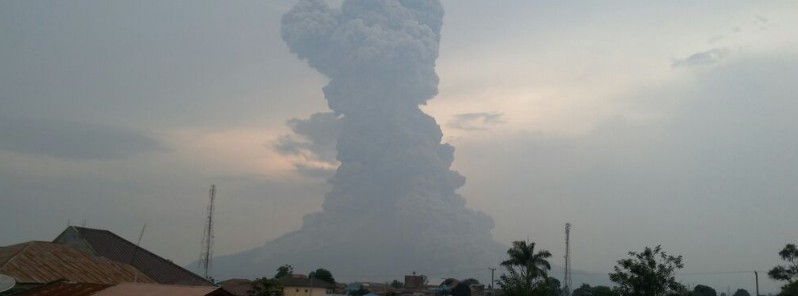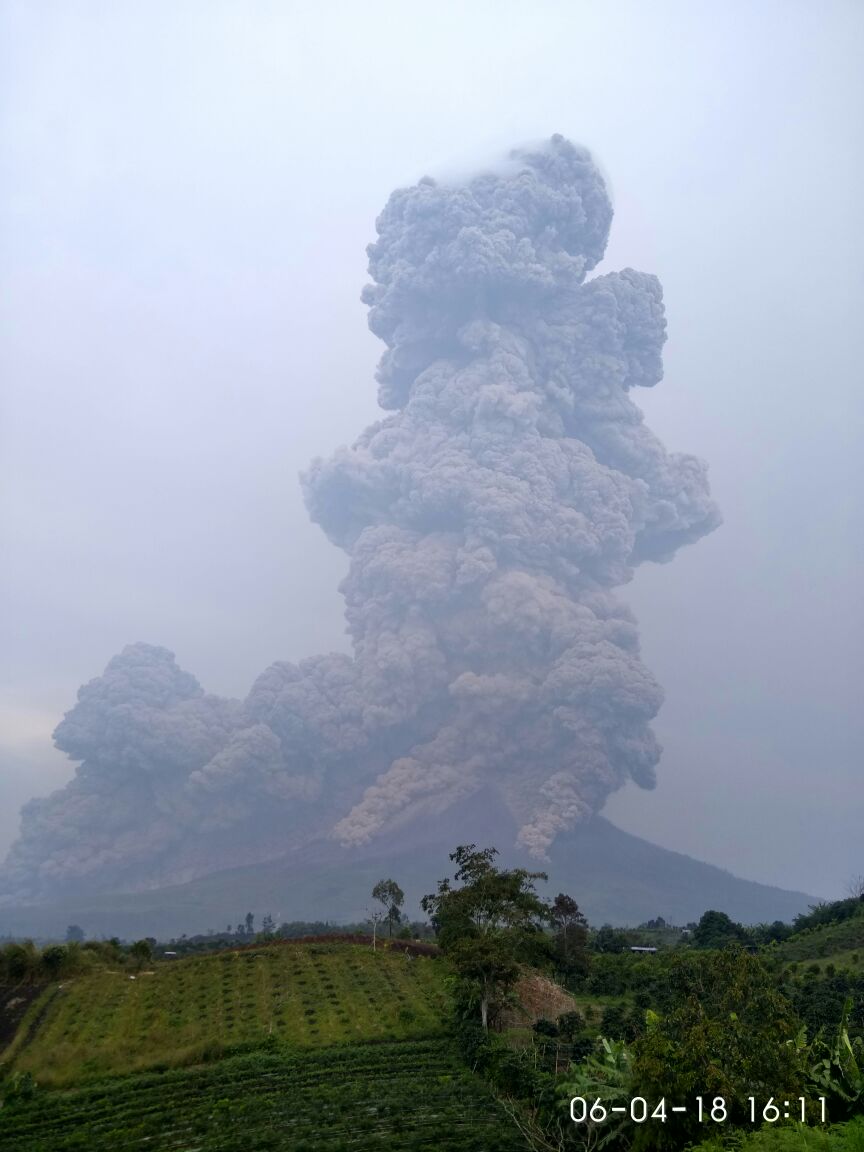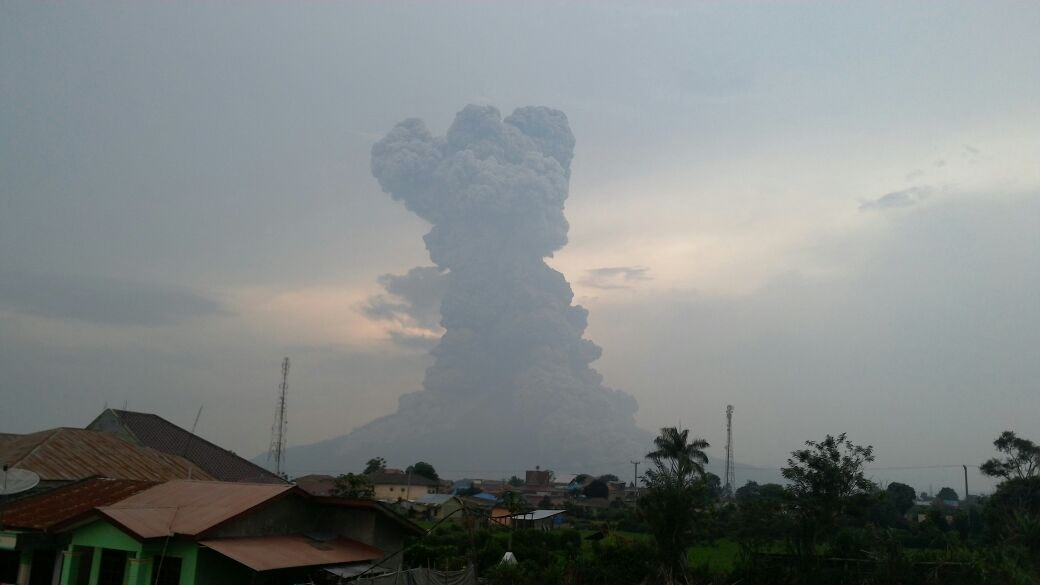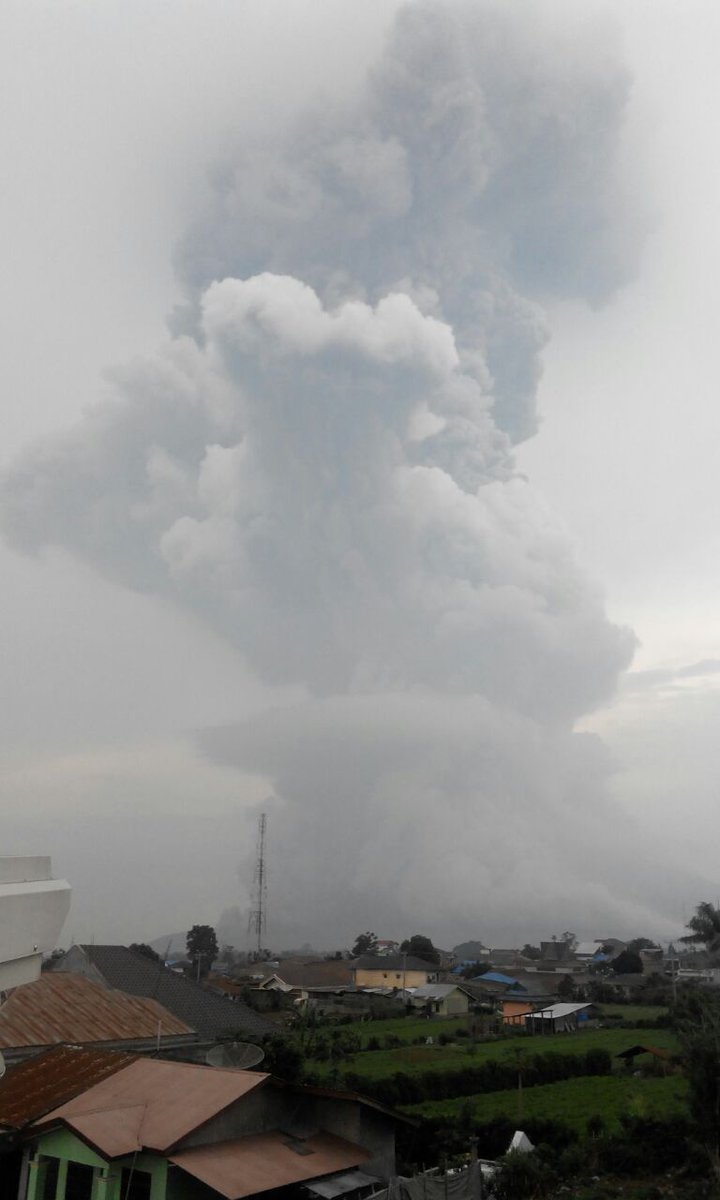Major eruption at Mount Sinabung, ash to 15 km a.s.l., Indonesia

A major eruption took place at Mount Sinabung, Indonesia around 09:00 UTC on April 6, 2018 shooting ash up to 15 km (50 000 feet) above sea level. The Aviation Color Code was raised to Red. This is the second major eruption of this volcano within 2 months.
The eruption produced numerous pyroclastic flows, reaching 3.5 km (2 miles) to the east and southeast.

Mount Sinabung erupting on April 6, 2018. Credit: Sutopo Purwo Nugroho
The Darwin VAAC reported two columns of volcanic ash. The first to 15 km (50 000 feet) moving NNE, and the second to 7.3 km (24 000 feet) moving SW.
Today's eruption is comparable to a high impact eruption of February 19, 2018. At the time pyroclastic flows traveled 3.5 km (2.1 miles) and 4.9 km (3 miles) from the summit and ash plume reached an altitude of 16.7 km (55 000 feet) above sea level.

Mount Sinabung erupting on April 6, 2018. Credit: Magma Indonesia

Mount Sinabung erupting on April 6, 2018. Credit: Magma Indonesia
Sinabung's first eruption in known history took place in August 2010. It lasted about a month and had Volcanic Explosivity Index of 2. Seismicity fluctuated until September 2013, when dense white plumes started rising 100 to 150 m (328 to 492 feet) above the crater.
Sinabung's first major eruption in known history occurred on September 17, 2013 and the volcano remains active ever since. Tens of thousands have been evacuated. Between February 2014 and May 2016, eruptions at Mount Sinabung claimed lives of 23 people.
Geological summary
Gunung Sinabung is a Pleistocene-to-Holocene stratovolcano with many lava flows on its flanks. The migration of summit vents along a N-S line gives the summit crater complex an elongated form. The youngest crater of this conical, 2 460-m-high (8 070 feet) andesitic-to-dacitic volcano is at the southern end of the four overlapping summit craters.
An unconfirmed eruption was noted in 1881, and solfataric activity was seen at the summit and upper flanks in 1912.
No confirmed historical eruptions were recorded prior to explosive eruptions during August – September 2010 that produced ash plumes to 5 km (16 404 feet) above the summit. (GVP)
Featured image: Eruption of Mount Sinabung on April 9, 2018. Credit: Sutopo Purwo Nugroho

Commenting rules and guidelines
We value the thoughts and opinions of our readers and welcome healthy discussions on our website. In order to maintain a respectful and positive community, we ask that all commenters follow these rules.